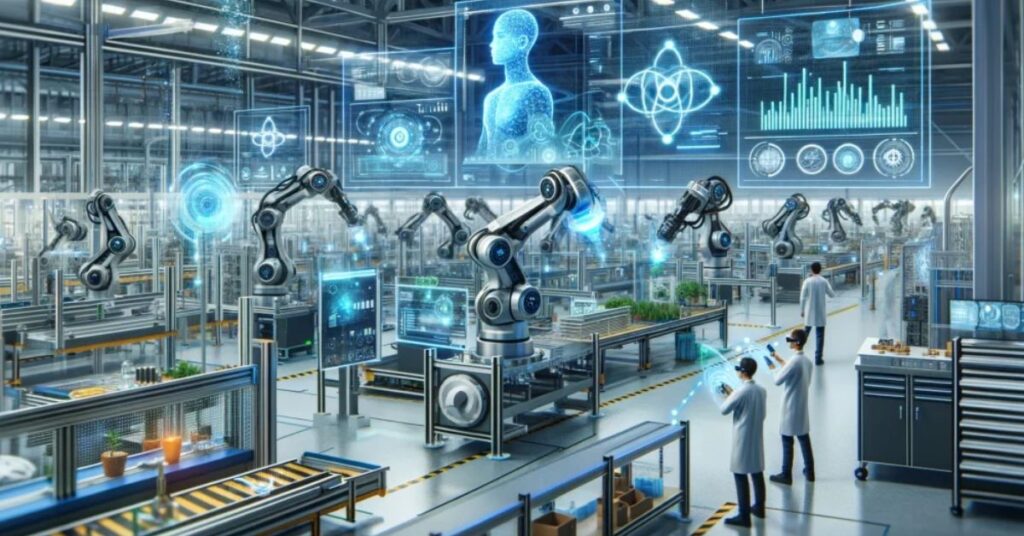Manufacturing technology and food science are joining forces. This union is changing how we make and eat food. Innovative tools are reshaping food production. Food science principles guide these changes. Together, they create safer, healthier food options.
This partnership affects everyone who eats. It touches farmers, factories, and dinner tables. The impact is far-reaching and growing. New methods are constantly emerging. They promise to revolutionize our food systems. This transformation is happening now. It will continue to evolve in the future.
The Evolution of Manufacturing Technology in the Food Industry
Food production has changed dramatically. Old methods are giving way to new ones. Machines now do much of the work. They are faster and more precise than humans. This shift began decades ago. It continues to accelerate today. Automation has taken over many tasks.
It reduces errors and increases output. Computer systems manage complex processes. They ensure consistency in food quality. These changes have made food more affordable. They have also made it more widely available. The industry continues to evolve rapidly. New technologies emerge frequently. They promise even more changes in the future.
Key Breakthroughs and Their Impact on Food Production and Quality
Several breakthroughs have transformed food production. High-pressure processing kills bacteria without heat. It preserves food’s natural flavors and nutrients. Nanotechnology creates better food packaging. It extends shelf life and detects spoilage.
Genetic modification produces crops with desired traits. These crops resist pests and grow in harsh conditions. 3D printing allows for custom food shapes and textures. It opens new possibilities in food design.
These innovations improve food quality and safety. They also increase production efficiency. The impact on the food industry is significant. Consumers benefit from these advancements every day.
The Role of Automation, AI, and Robotics in Modernizing Food Manufacturing

Automation has revolutionized food manufacturing. Machines now perform many repetitive tasks. They work faster and more accurately than humans. Artificial Intelligence (AI) manages complex production processes. It optimizes schedules and predicts maintenance needs.
Robots handle delicate food items with precision. They work in environments too harsh for humans. These technologies increase productivity. They also improve food safety and quality. The food industry is becoming increasingly high-tech. This trend shows no signs of slowing down.
Read As:Martel Stenomask vs Talk Technologies: A Comprehensive Comparison
Sustainability and Efficiency Improvements in Food Production with Technological Advancements
Technology is making food production more sustainable. Precision agriculture uses less water and fewer chemicals. It produces higher yields with less environmental impact. Vertical farming grows more food in less space. It reduces transportation needs and carbon emissions.
Energy-efficient equipment lowers power consumption in factories. Waste reduction technologies turn food scraps into useful products. These advancements help conserve resources. They also reduce the industry’s carbon footprint. Sustainable practices are becoming industry standards. They benefit both the environment and businesses.
Case Studies of Successful Integration of Manufacturing Technology in Food Processing
Many companies have successfully adopted new technologies. Nestlé uses AI to optimize its production lines. This has significantly reduced waste and energy use. Tyson Foods employs robots for meat processing. This has improved worker safety and product consistency.
Unilever uses blockchain to trace ingredient sources. This ensures product quality and ethical sourcing. These companies show the benefits of embracing technology. Their success encourages others to follow suit. The food industry is becoming more innovative. This trend is likely to continue in the future.
Future Trends and the Potential for Further Innovation in This Field

The future of food manufacturing looks exciting. 3D food printing may produce custom meals on demand. Cultured meat could provide protein without animal farming. Blockchain might ensure complete food traceability. Internet of Things (IoT) devices could monitor every step of production.
These technologies are still developing. They promise to revolutionize food manufacturing. The potential for innovation seems limitless. We may soon see foods we can’t yet imagine. The intersection of technology and food science is fertile ground. It will likely yield many more breakthroughs.
Demand for Nutritious and Safe Food
Consumers want healthier food options. They also demand safer food products. Food safety regulations are becoming stricter. Manufacturers must adapt to these changes. Technology helps meet these demands. It allows for better nutrient preservation.
It also improves contamination detection. Companies are investing in new safety measures. They are using advanced testing methods. These efforts aim to produce healthier, safer foods. Consumer trust is a top priority for food manufacturers.
Packaging and Waste

Food packaging is evolving rapidly. Sustainable materials are replacing traditional plastics. Smart packaging can monitor food freshness. It can even extend shelf life. Edible packaging is becoming more common. These innovations reduce waste significantly.
They also improve food safety. Waste reduction is a major industry focus. New technologies help repurpose food waste. They turn it into useful products. This approach benefits the environment. It also improves company profits.
Looking Back
Food manufacturing has changed dramatically. In the past, most work was done by hand. Machines were simple and limited. Quality control was challenging. Food safety was a constant concern. Today, the picture is very different. Advanced machinery dominates production lines.
Computer systems manage complex processes. Quality is more consistent than ever. Food safety has improved significantly. These changes happened gradually. Each innovation built on previous ones. The industry continues to evolve rapidly.
Collecting Data
Data collection is crucial in modern food production. Sensors monitor every stage of the process. They track temperature, humidity, and other factors. Data analytics help optimize production. They predict maintenance needs and prevent breakdowns.
Traceability systems track food from farm to table. This improves safety and quality control. Data helps companies make informed decisions. It leads to more efficient operations. The food industry is becoming increasingly data-driven.
Robots and Machines

Robots are transforming food manufacturing. They perform tasks too dangerous for humans. Robotic arms handle food with precision. They work tirelessly without breaks. Automated guided vehicles move materials around factories. They increase efficiency and reduce accidents.
Machine vision systems inspect food quality. They catch defects humans might miss. These machines improve productivity dramatically. They also enhance food safety and quality. The role of robots in food production is expanding rapidly.
Reducing Food Waste
Food waste is a global problem. Technology offers solutions. Smart inventory systems reduce overproduction. Improved packaging extends shelf life. AI-powered demand forecasting helps match supply to demand. Food upcycling turns waste into new products.
These innovations significantly reduce waste. They save money for companies. They also benefit the environment. Reducing food waste is becoming a key industry goal. Technology plays a crucial role in achieving this.
Conclusion
Manufacturing technology is revolutionizing food science. It’s changing how we produce, process, and consume food. Automation and AI are increasing efficiency. New packaging technologies are reducing waste. Data analytics are improving quality control.
These changes benefit consumers and companies alike. They promise safer, healthier, and more sustainable food options. The transformation of the food industry is ongoing. We can expect more innovations in the future. The intersection of technology and food science is fertile ground. It will continue to yield exciting developments for years to come.
Frequently Asked Questions
How is AI used in food manufacturing?
AI optimizes production processes, predicts maintenance needs, and improves quality control in food manufacturing.
What is high-pressure processing?
High-pressure processing is a method that uses extreme pressure to eliminate harmful bacteria while preserving food’s nutritional value and flavor.
How does 3D printing apply to food production?
3D printing in food production allows for the creation of custom food shapes and textures, opening new possibilities in food design.
What is precision agriculture?
Precision agriculture uses GPS technology and sensors to monitor crop health and soil conditions, allowing for more efficient use of resources.
How does blockchain technology benefit the food industry?
Blockchain technology enhances supply chain transparency, allowing for better traceability of food products from farm to table.

Emma is a seasoned tech expert with 5 years of experience. Her deep knowledge and passion for technology drive our website’s innovative content and solutions, making her an invaluable part of our team.